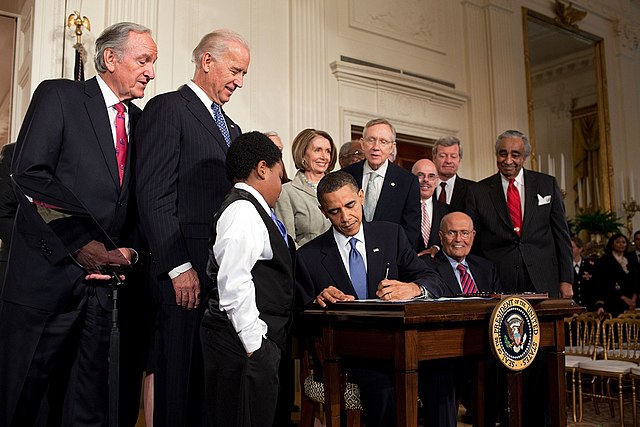By Stacy M. Brown
NNPA Newswire Senior National Correspondent
(NNPA Newswire) – The Affordable Care Act (ACA) Marketplace opens its 2025 enrollment season, offering millions the opportunity to secure or adjust health insurance plans. This year’s opening enrollment is vital, particularly if Donald Trump is re-elected. The twice-impeached former president and MAGA Republicans have vowed to repeal the healthcare law, which would deprive an estimated 40 million Americans of coverage. Under Trump’s plan, millions of individuals with pre-existing conditions would also lose health insurance.
In 2024, approximately 4.2 million Floridians enrolled in an ACA health plan, marking a more than 200 percent increase from 2020, according to White House data. Florida, one of 10 states that hasn’t expanded Medicaid, is seeing around 823,000 residents lose Medicaid coverage.

More than 418,000 Michigan residents signed up for new health plans through HealthCare.gov—a nearly 30 percent increase over 2023. In Wisconsin, over 250,000 residents secured ACA coverage, as state officials reported. Meanwhile, 1.26 million Georgia residents enrolled, reflecting a 206 percent rise from 2020, with about 96 percent receiving an advanced premium tax credit to help cover premiums.
Maryland also saw a 33 percent increase in Black enrollees and a 30 percent increase in Hispanic enrollees. In Virginia, 389,568 residents enrolled, marking a 67 percent increase since 2020, with 88 percent receiving advanced premium tax credits to help cover costs. Meanwhile, 11,910 District of Columbia residents enrolled, although enrollment has decreased by 26 percent since 2020 — about 22 percent of D.C. enrollees qualified for advanced premium tax credits.
With increased enrollment nationwide, this year’s Marketplace offers more options than ever. According to the Kaiser Family Foundation (KFF), consumers can choose from a broader array of plans, with benchmark silver plans averaging a 4 percent premium increase and bronze plans up by 5 percent. However, enhanced subsidies introduced under the Inflation Reduction Act (IRA) continue to make coverage affordable, capping monthly premiums at a percentage of income. Most enrollees on HealthCare.gov can find plans for under $10 per month, despite unsubsidized premiums reaching $497 for a 40-year-old on a benchmark silver plan. KFF researchers noted that some states, like Vermont, Alaska, and North Dakota, face double-digit premium hikes, while others, like Louisiana, see decreases in low-cost plans.
Under the Biden-Harris administration, the ACA Marketplace has expanded to include more insurers, with an average of 9.6 participating insurers per state, allowing 97 percent of Healthcare.gov users to choose from at least three insurers. The range of options includes silver and bronze plans tailored to meet different healthcare needs. Silver plans, which serve as the basis for subsidy calculations, offer a balance of coverage and cost, while bronze plans provide lower premiums but higher deductibles.
Federal funding has also been allocated to ensure continued support for enrollees. The Biden-Harris administration committed $100 million to the Navigator program, providing more resources to help Americans understand and select the best health plan. Enhanced subsidies—initially introduced under the American Rescue Plan Act and extended by the IRA—are set to expire at the end of 2025 unless renewed by Congress. Without renewal, millions would face premium hikes in 2026, with costs doubling in some cases. A young family of four in Pennsylvania earning $125,000 would see an annual increase of $6,448, while a 45-year-old in Wisconsin with a $60,000 income would experience a $1,354 hike.
DACA recipients are eligible for ACA coverage for the first time, with subsidies that help reduce costs. Effective November 1, this new eligibility offers a special enrollment window for an estimated 100,000 DACA recipients despite ongoing litigation. Additionally, states like California and New Mexico are leveraging federal tax credits to reduce deductibles, enhancing affordability for those with lower incomes.
KFF found that further safeguards and protections accompany this year’s enrollment. Stricter fraud protections require brokers to secure consent before making plan changes and respond to complaints about unauthorized plan modifications. Non-ACA-compliant short-term plans are now limited to four months and must display clear disclaimers noting they lack comprehensive health coverage. Similarly, fixed indemnity plans, which pay a set amount for specific medical events but lack ACA protections, now carry required disclaimers.
New network adequacy standards for federal Marketplace plans also ensure timely access to care. Wait times are capped in 2025 at 10 business days for behavioral health, 15 days for primary care, and 30 days for non-urgent specialty care. Compliance will be monitored through “secret shoppers” surveys to verify access.
Health officials said the ACA Marketplace’s enrollment success reflects expanded access under the Biden-Harris administration. However, political opposition from Trump and MAGA Republicans threatens these gains.
To register for health insurance for 2025, visit www.Healthcare.gov.
The post ACA Marketplace enrollment opens with expanded options and subsidies appeared first on AFRO American Newspapers.











